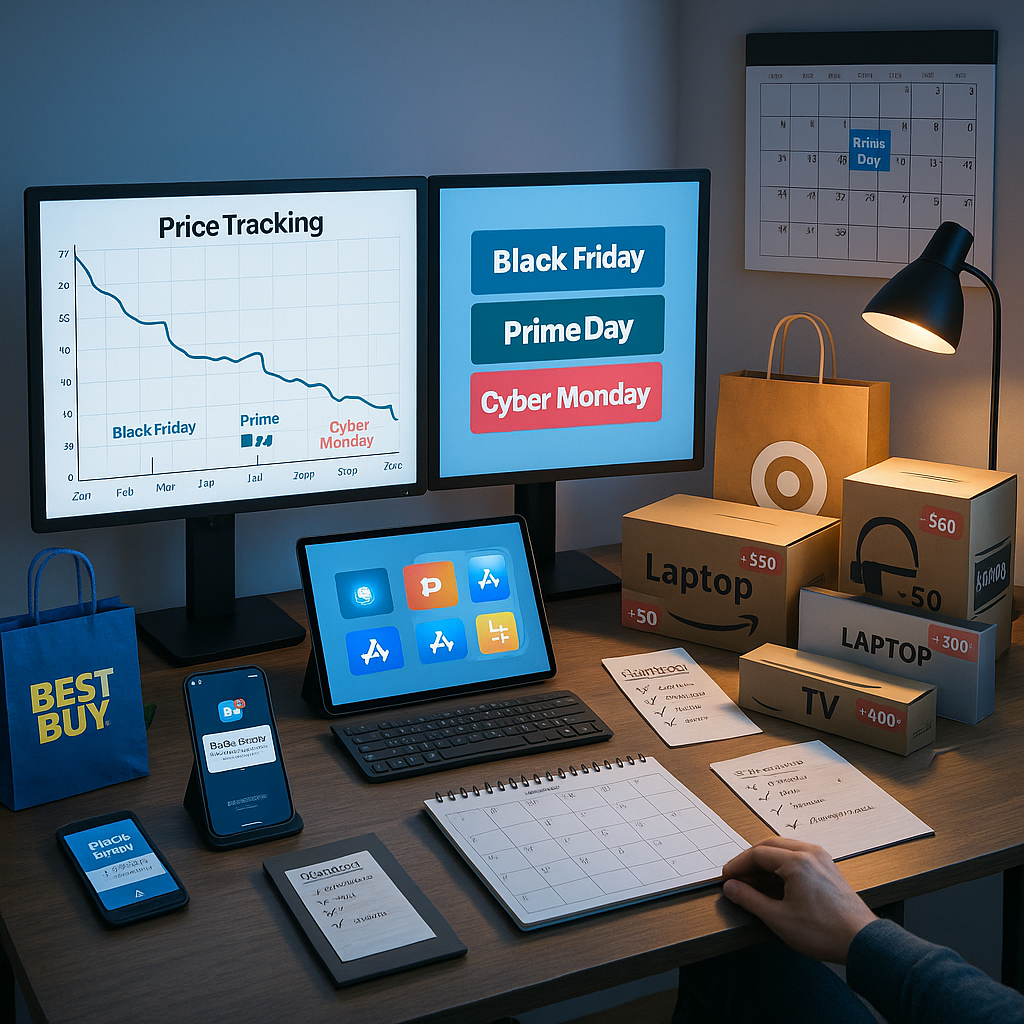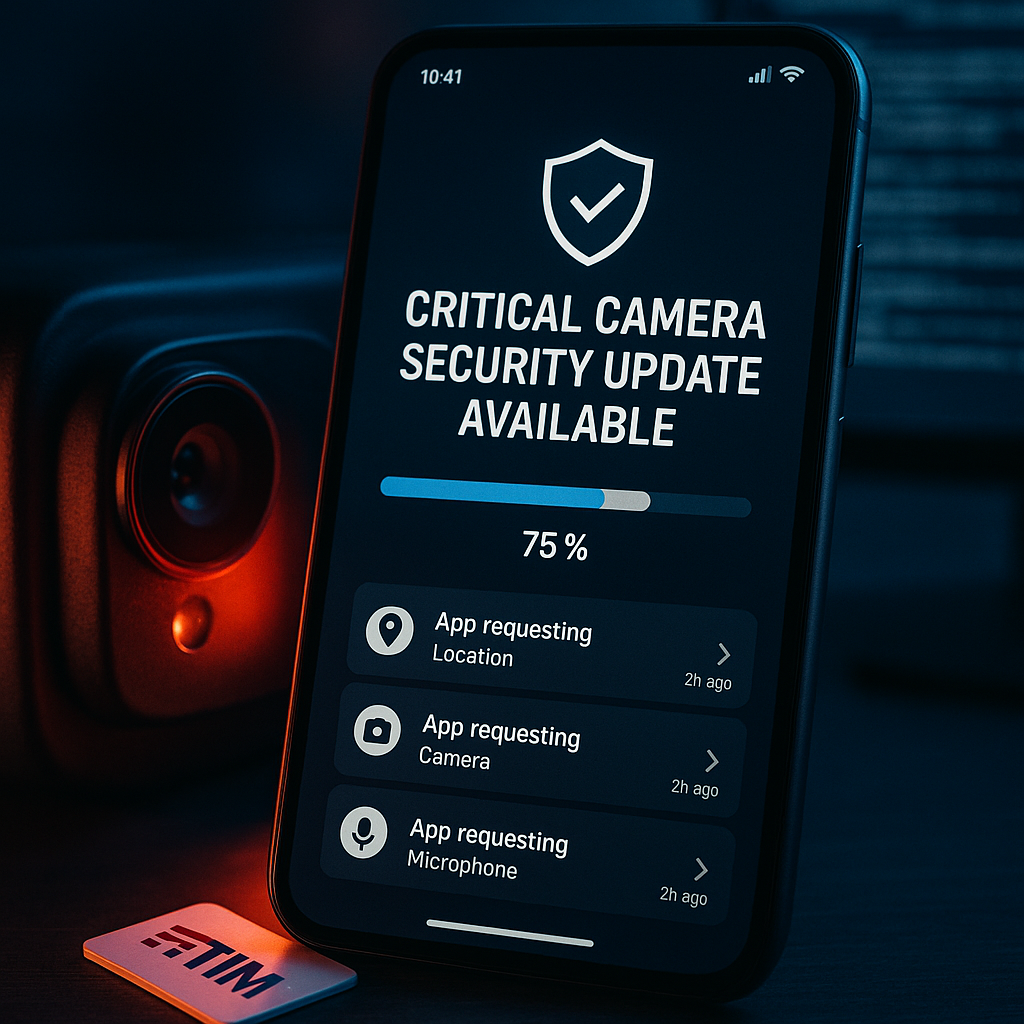Key Takeaways
-
Electronics prices fluctuate throughout the year, often catching shoppers off guard. To consistently land the best deals, understanding the patterns behind these changes is crucial, especially during events like seasonal promotions and Black Friday. This guide shares the proven methods and timing secrets that savvy shoppers use to maximize their savings on electronics. The goal: making every dollar count.
-
Leverage the power of seasonal sales cycles. Major discounts on electronics regularly align with landmark events such as Back-to-School, end-of-year clearance, Prime Day, and post-holiday markdowns. Mark your calendar and plan big purchases around these opportunities for optimal value.
-
Black Friday is not the only window for top tech bargains. While it boasts some of the year’s most publicized deals, Cyber Monday and early pre-holiday “doorbuster” events can deliver equal or even better discounts on must-have gadgets.
-
Make the most of new product launches and next-gen rollouts. Whenever brands release cutting-edge models, previous generations often see immediate price drops. Wait until just after a big launch to purchase last year’s version at a significant discount.
-
Track price trends, not just hype. Employ reliable price-tracking tools and set alerts to stay ahead of unadvertised or flash sales. Many of the best markdowns never make it to the ads but can be captured through real-time monitoring.
-
Factor in bundle deals for hidden value. Retailers frequently include extras such as accessories, warranties, or store gift cards with electronic purchases during major sales. Compare the all-in value instead of focusing solely on the upfront price.
-
Consider certified refurbished and open-box items. Trusted retailers offer these products at substantial markdowns, often with warranties and quality assurances. For categories like laptops, smartphones, or smart home devices, opting for refurbished can be a smart, budget-friendly decision.
By following these insights, you can buy tech with certainty and avoid constantly guessing about “when’s the best time?” Let’s explore how to deploy these tactics and timing strategies for the best possible return on your electronics spend.
Introduction
Scoring the latest gadget at the right price isn’t just about being lucky. It’s a result of timing, planning, and a bit of research. The world of electronics shopping is shaped by ever-shifting sales cycles, sudden flash events, and headline retail moments like Black Friday or Prime Day.
Unlocking real savings means turning impulse buying into strategic decision-making. By decoding seasonal sale trends, staying alert to overlooked promotions, and understanding how new launches impact last year’s models, you can stretch your technology budget much further. That can also take the stress out of shopping. In the next sections, we’ll uncover the essential strategies and industry secrets for landing your next device at peak value.
Major Shopping Events and Their Impact
Navigating the best electronics deals requires a solid grasp of the key shopping events throughout the year. Retailers strategically align major discounts with cultural and commercial milestones, giving budget-conscious shoppers ample windows to secure their favorite gadgets. And not just during the holidays, either.
Un passo avanti. Sempre.
Unisciti al nostro canale Telegram per ricevere
aggiornamenti mirati, notizie selezionate e contenuti che fanno davvero la differenza.
Zero distrazioni, solo ciò che conta.
 Entra nel Canale
Entra nel Canale
Traditional Holiday Sales
Black Friday and Cyber Monday remain two of the most powerful forces in consumer electronics shopping, regularly delivering savings between 20-40% on high-ticket items such as laptops, smart TVs, and gaming consoles. However, these flagship events have evolved. Major retailers including Best Buy, Walmart, and Amazon now stretch their Black Friday deals across several weeks in October and November. It’s become a marathon of markdowns rather than a single day of chaos.
Recent years have provided great case studies:
- Premium 4K Smart TVs were discounted by $400-600 during holiday sales.
- Gaming consoles often came bundled with multiple games and accessories, saving buyers $150-200 per package.
- High-end laptops and tablets saw markdowns of $300-500, making top specs far more accessible.
Prime Day, typically celebrated in July, has rapidly risen as a summer alternative to Black Friday. Amazon’s event now sets competitive benchmarks that other retailers scramble to match, resulting in lucrative deals on headphones, tablets, and smart home products mid-year.
Seasonal Shopping Patterns
While holiday events attract the headlines, each season presents unique tech savings if you know where to look:
Spring (March-May):
- As new TV models debut, previous generations receive deep discounts, often 25-35% off original prices.
- Smart home devices (like thermostats and security cams) feature in “spring refresh” sales.
- Refurbished electronics become widely available during spring cleaning events.
Summer (June-August):
- Back-to-school brings laptop, tablet, and printer sales, with bundles often saving students and parents $200-300.
- Prime Day typically lands in July, unleashing a wave of site-wide tech deals.
- Outdoor electronics and wearables (such as fitness trackers or portable speakers) see steep reductions.
Fall (September-November):
- Labor Day sales kick off early tech discounts as retailers clear inventory ahead of the holidays.
- Pre-Black Friday events in October and early November deliver early access to some of the best pricing of the year.
- Video game consoles, VR headsets, and accessories traditionally reach their lowest prices.
Winter (December-February):
- Last-minute holiday and post-holiday clearance sales offer some of the best discounts on leftover inventory.
- Super Bowl season (January-February) is the perfect time to score deals on large-screen TVs.
- Open-box and refurbished gadgets reach peak supply as retailers process holiday returns.
This seasonal rhythm isn’t limited to consumer electronics. For example, healthcare and fitness devices (like smartwatches or digital blood pressure monitors) often go on sale around New Year’s and spring “wellness” promotions. In education, laptops and e-readers are featured in August-September, while smart home gear and security cameras align with spring and fall home improvement trends.
Timing Strategies for Specific Electronics
Mastering the art of technology bargain shopping also means tailoring your strategy to the device category, since each follows its own pricing rhythm.
Smartphones and Tablets
The timing of purchases is tightly linked to annual product release cycles:
- Apple, for instance, unveils new iPhones and iPads each fall. The best deals on previous models quickly appear two to three months after these launches.
- Android phones follow a similar cycle, with flagship product reveals in the spring or fall. Major discounts emerge 4-6 months post-release as new inventory replaces last year’s offerings.
- In both cases, savvy shoppers can secure 30-40% savings on previous-generation models shortly after a new product drops.
Computers and Gaming Systems
Laptops, desktops, and gaming consoles offer distinct savings opportunities:
- The back-to-school period (July-September) brings notebooks and education-focused tech to the forefront.
- Black Friday and Cyber Monday are optimal for gaming consoles, bundles, and hardware upgrades.
- Shoppers targeting business-class laptops or workstations should look for end-of-fiscal-year sales, as retailers rush to meet revenue targets with aggressive markdowns.
Additionally, waiting for significant industry announcements (like major chip or graphics card launches) can trigger price drops on current models, often within 2-4 weeks.
Expanding to Other Sectors
Consumers interested in smart kitchen devices, environmental monitors, or home office equipment should also be aware of category-specific timing. For example, eco-focused appliances and smart thermostats often see discounts during Earth Day promotions, while video conferencing gear tends to go on sale in spring and fall as businesses refresh office tech.
Un passo avanti. Sempre.
Unisciti al nostro canale Telegram per ricevere
aggiornamenti mirati, notizie selezionate e contenuti che fanno davvero la differenza.
Zero distrazioni, solo ciò che conta.
 Entra nel Canale
Entra nel Canale
Advanced Shopping Techniques
A strategic approach to tech shopping goes beyond just timing. Employing advanced techniques can further stretch your budget and help you capture genuine value.
Price Tracking and Monitoring
Tech-savvy consumers rely on a portfolio of digital tools to optimize purchases:
- CamelCamelCamel: Tracks Amazon price history, helping you confirm true deal prices versus artificial markdowns.
- Slickdeals: Notifies users of price drops and community-vetted deals across multiple retailers.
- Honey: A browser extension that scans the web for discount codes and automatically applies the best one at checkout.
According to case studies, dedicated price tracking leads to average additional savings of 10-15%, above and beyond advertised sales.
Store-Specific Strategies
Each retailer has unique policies that can be leveraged:
- Best Buy: Offers price matching and exclusive deals for rewards program members. Students can register for special pricing.
- Amazon: Regularly rotates Lightning Deals, giving you a shot at short-lived discounts. Subscribe & Save is a great hack for tech accessories and smart home consumables.
- Costco: Known for bundling extended warranties and accessory packs into the base price of electronics.
- Newegg: Specializes in combo deals and open-box discounts, especially for computer components and gaming gear.
Combining these perks with good timing can multiply your savings, sometimes yielding discounts upward of 50% on high-demand products.
Broader Applications
Advanced shoppers in other sectors, from home appliances to medical tech, also benefit by pairing retailer-specific programs (like “family health” bundles or appliance combo offers) with major sales events.
Deal Evaluation and Authentication
With retailers using clever marketing tactics, separating genuine bargains from mere hype is more important than ever.
Identifying Genuine Deals
True value is found by:
- Reviewing historical pricing and spotting the actual low points, not just claimed markdowns.
- Comparing offers across multiple reputable retailers for consistent value.
- Assessing bundles holistically (sometimes the extras add real value, other times they mask higher prices).
- Understanding regular sale price cycles to distinguish between rare deals and common discounts.
Aim for at least 15-20% below an item’s typical sale price to ensure you’re snagging a real bargain, not just beating the manufacturer’s suggested retail price (MSRP).
Common Pricing Tactics
Stay vigilant for retailer strategies such as:
- Briefly inflating prices before a “sale” to exaggerate discounts.
- Bundling low-value or unwanted items with hot tech to water down the overall deal.
- Creating urgency with countdowns or “limited stock” banners, even if the actual discount is ordinary.
- Labeling offers as “exclusive” even when competitors match or beat the price.
Being aware of these techniques lets you cut through the marketing noise and focus on authentic savings.
Conclusion
Achieving mastery in tech deal hunting goes well beyond timing your Black Friday purchases. It means internalizing the rhythms of the retail calendar, understanding product launch cycles, and using advanced digital tools to spot true value in a sea of promotions. By combining these insights with retailer-specific perks and staying alert to pricing tactics, today’s shoppers can routinely secure electronics at significant discounts, stretching their budgets and upgrading more often.
Looking ahead, the landscape of tech shopping will only become more dynamic. Retailers are adopting ever-more sophisticated pricing models and AI-driven discounts, requiring consumers to adapt their strategies with equal sophistication. Those who embrace timing, research, and digital innovation will not only save money but consistently lead the curve. That makes every purchase smarter and every gadget more rewarding. The challenge is clear. Will you passively wait for the next big sale, or proactively position yourself to seize the best value each season? The future belongs to those who make technology (and their dollars) work smarter, not harder.





Leave a Reply